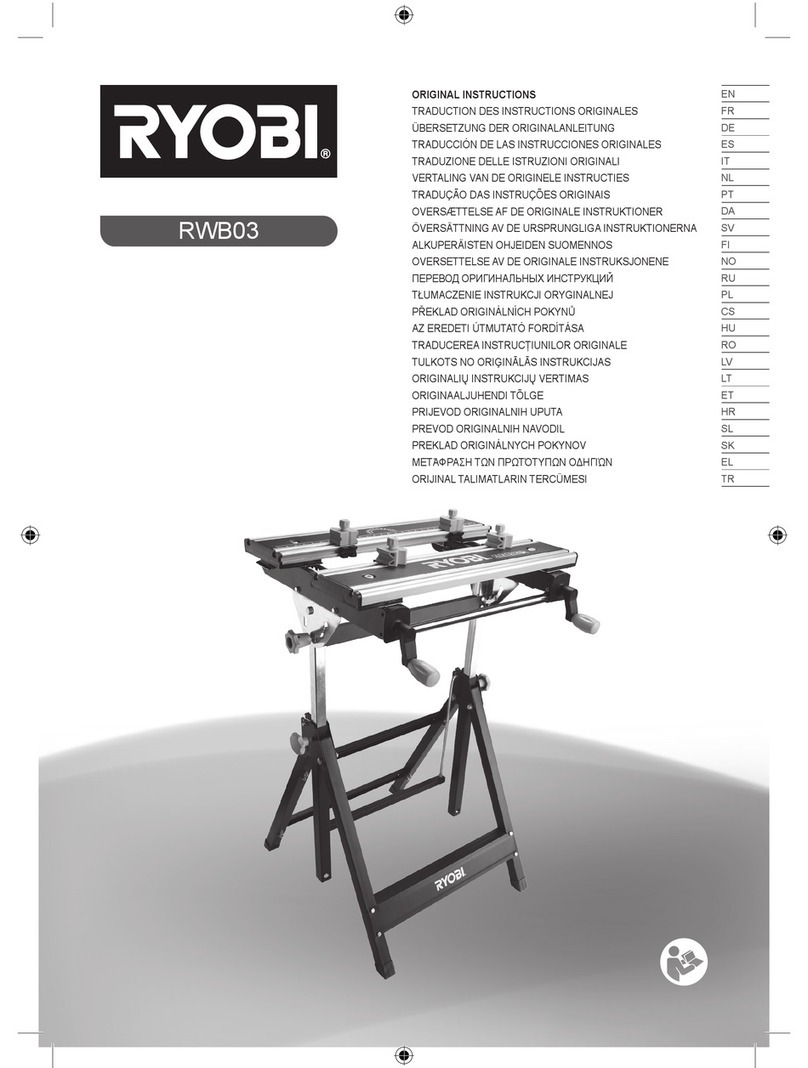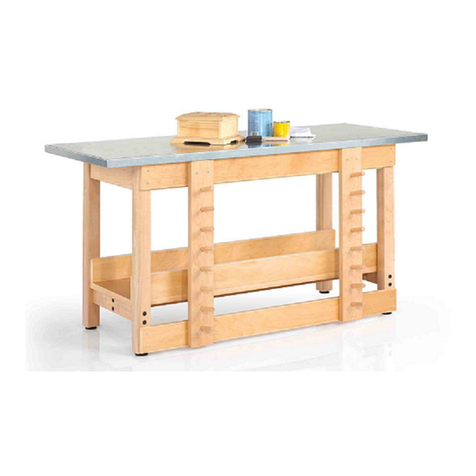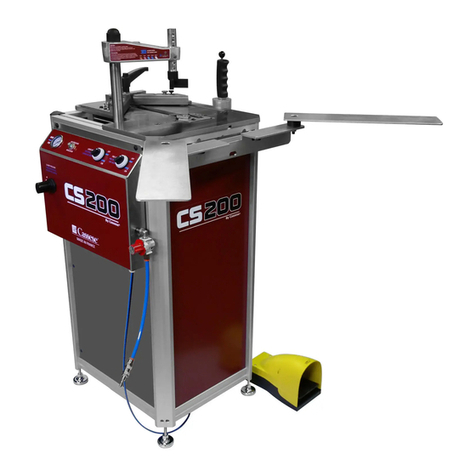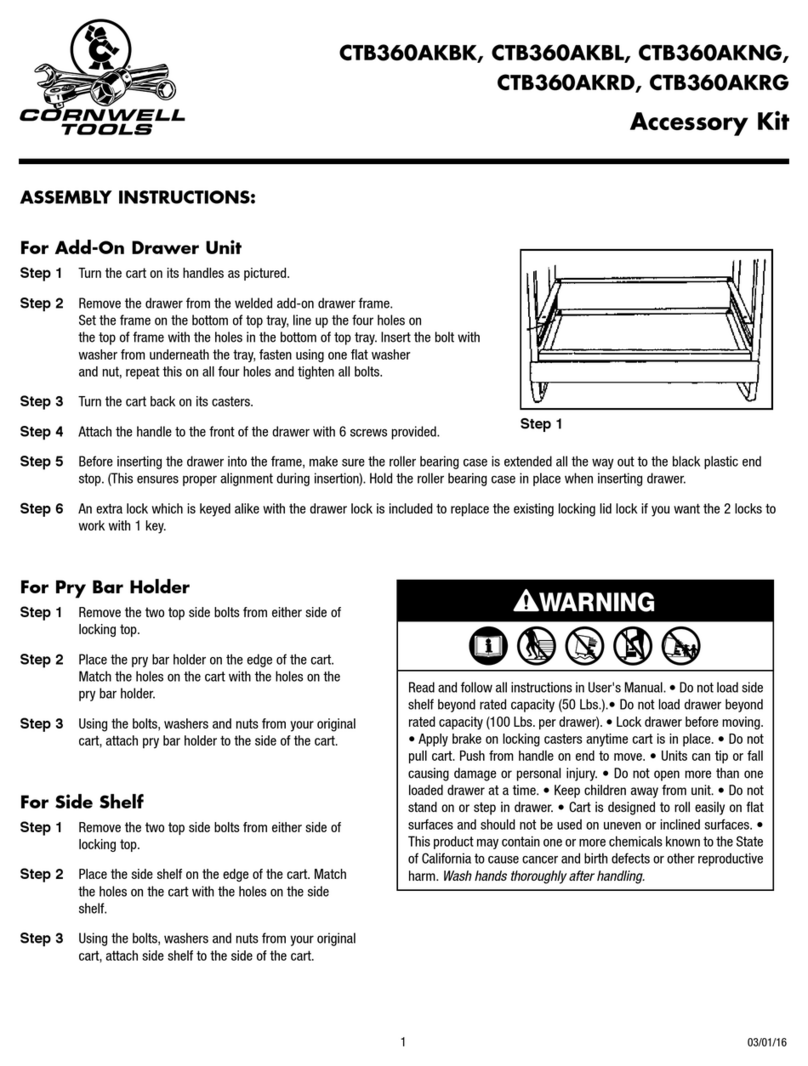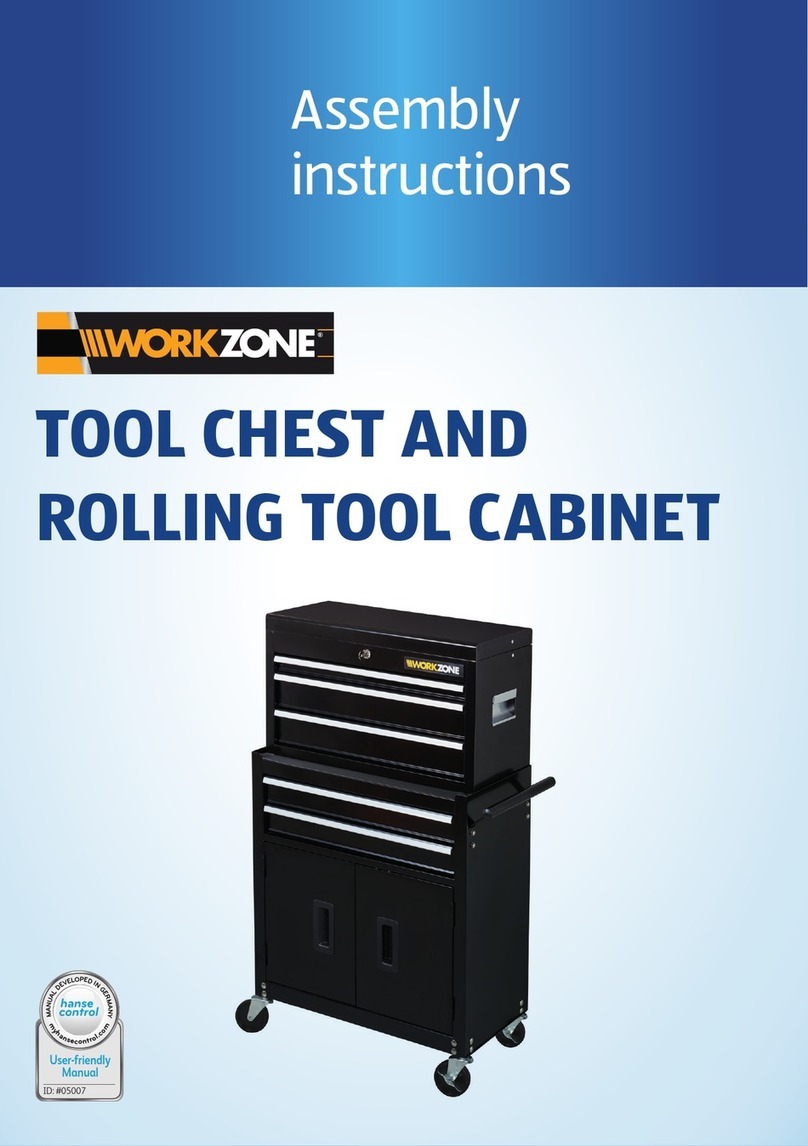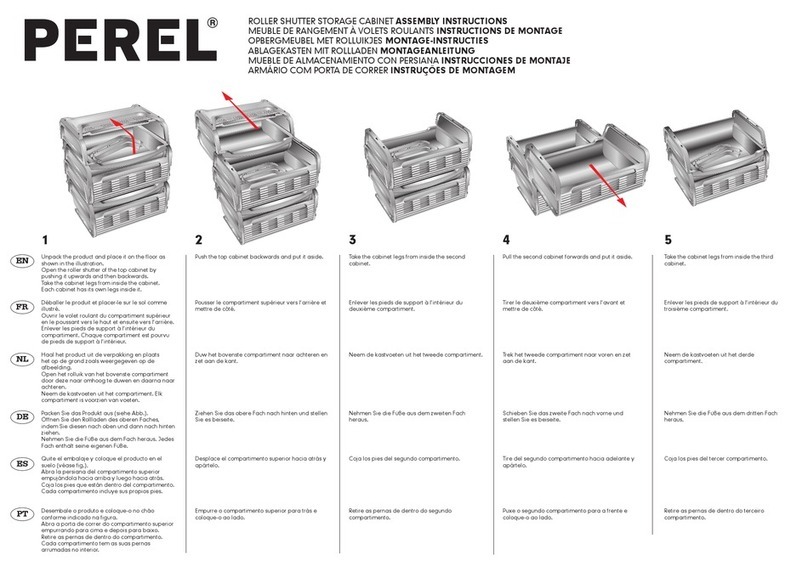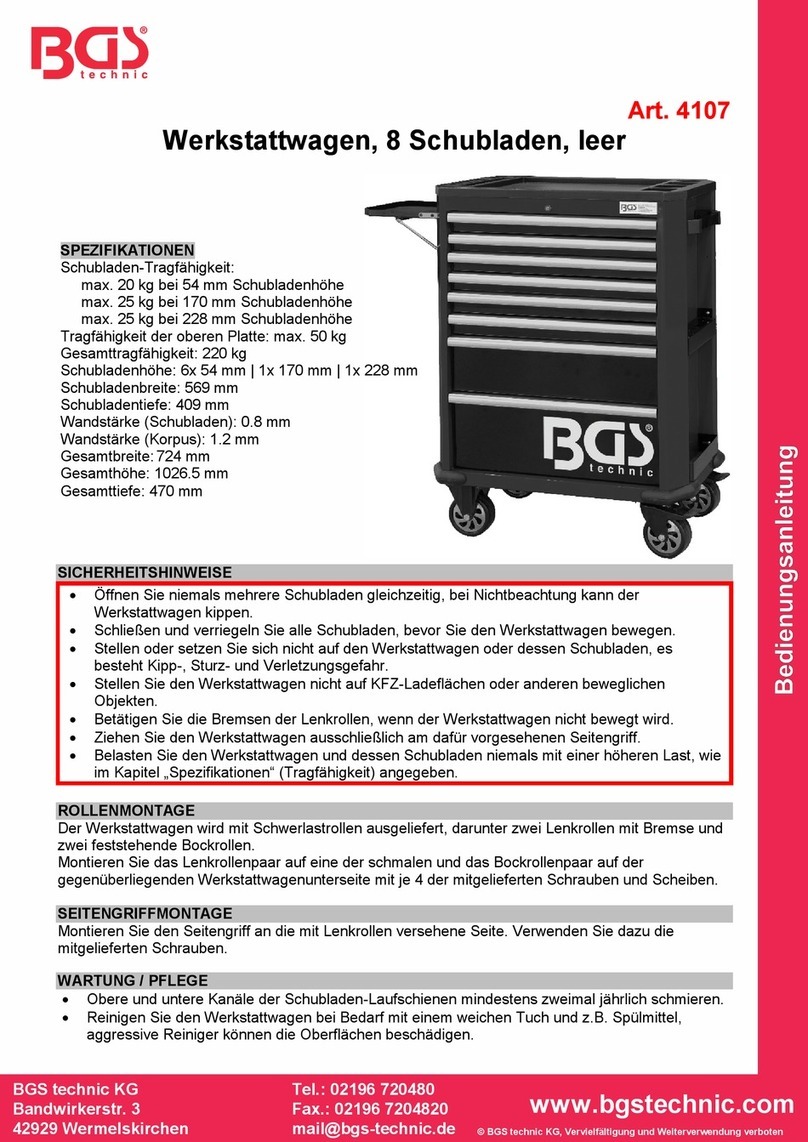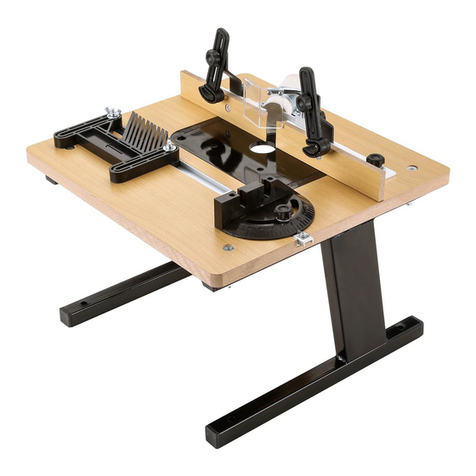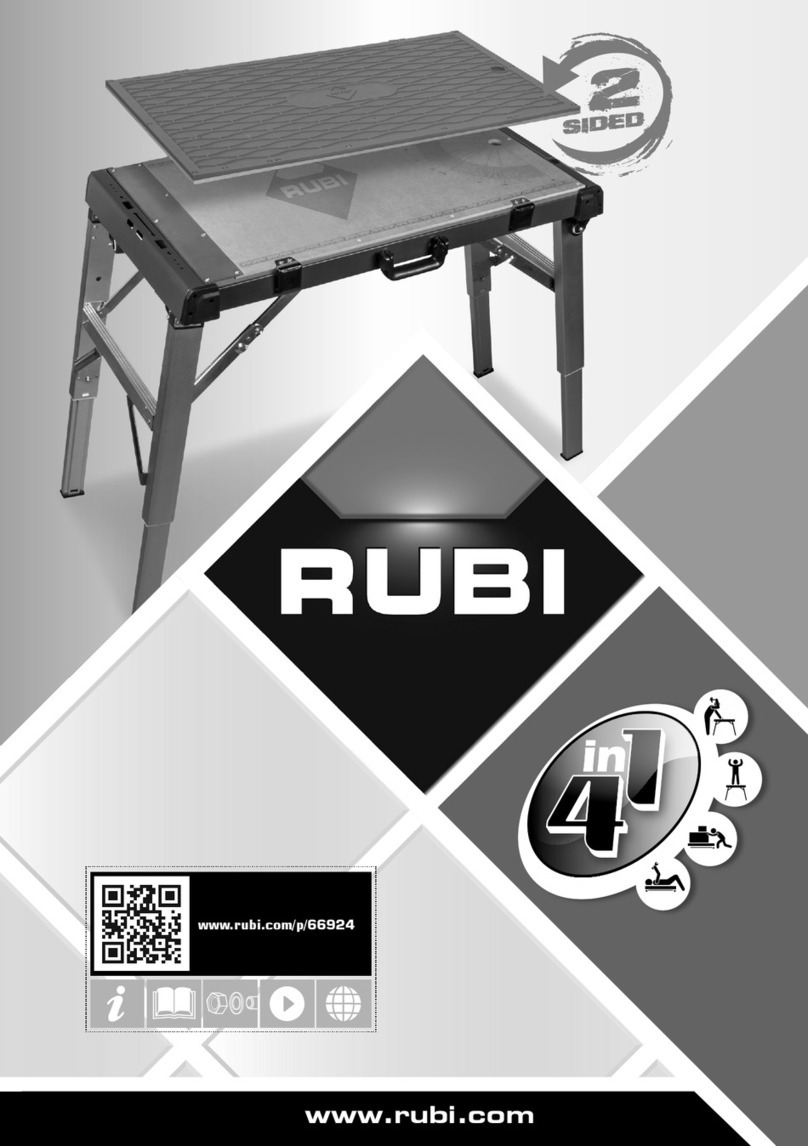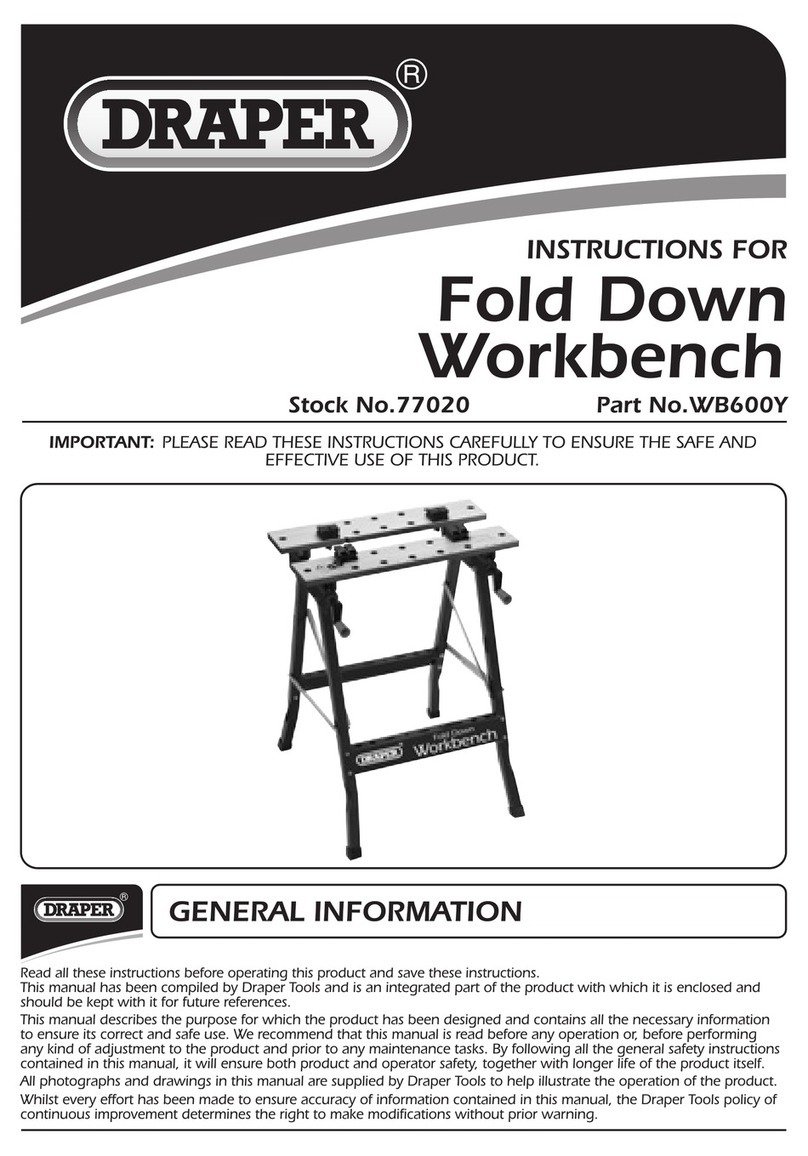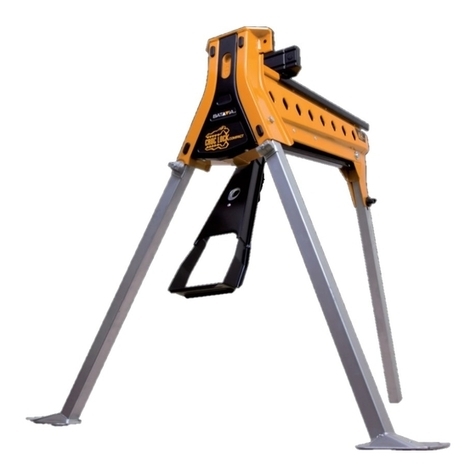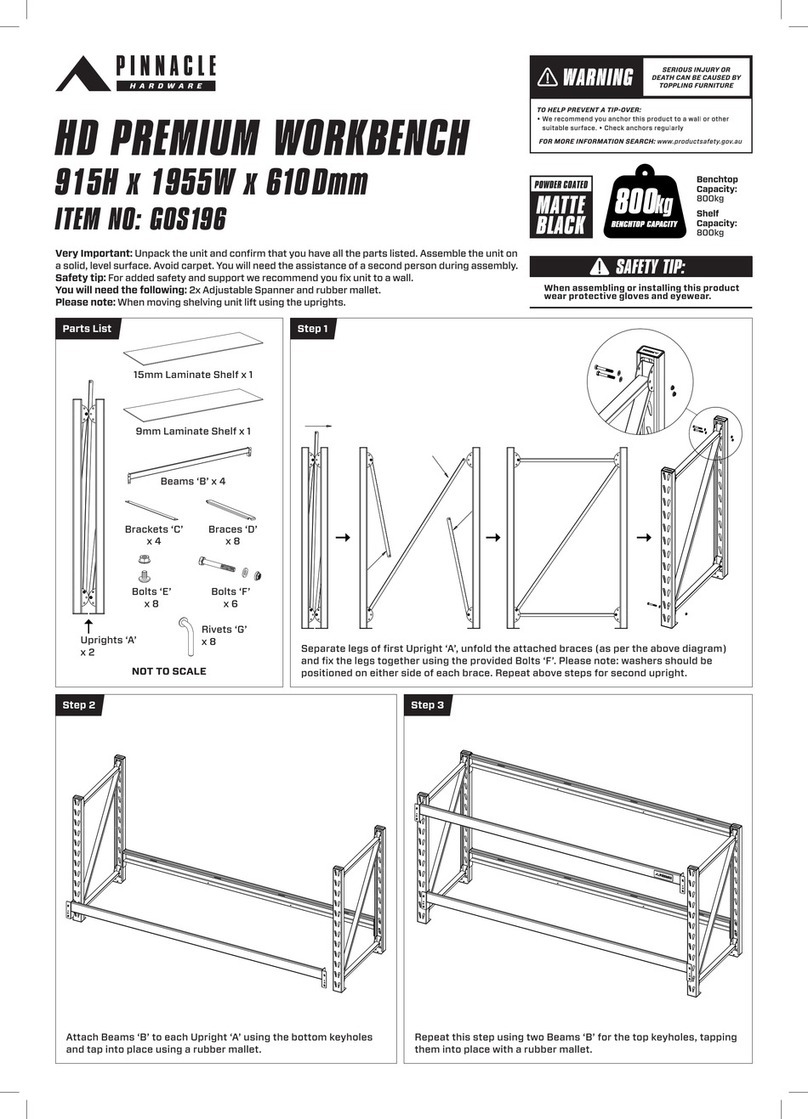
FIG� 2FIG� 1
4
NOTE: For your safety, please ensure you read these instructions carefully before use and keep
these instructions in the work space where the sawhorse will be used.
SAFE OPERATION AND USE OF THIS SAWHORSE
1. When lifting the sawhorse, use proper lifting techniques to avoid personal injury.
2. Ensure work area is well lit while working.
3. Ensure sawhorse is standing on a level surface that is clear, dry and free of debris.
4. Ensure all four legs have solid contact with the floor. If the sawhorse is not positioned
level and straight, loads placed upon it could fall, potentially causing damage to the
item(s) loaded on it, and possible severe personal injury or death.
5. Ensure the load placed on any sawhorse does not exceed the applicable Safe Working
Load Rating. Overloading can lead to failure of the sawhorse, potentially causing damage
to the item(s) loaded on it, and possible severe personal injury or death.
6. Never stack sawhorses to obtain extra height.
SETTING UP YOUR SAWHORSE
1. Press the Release Button and fold down the first set of legs (Fig 1).
2. Make sure legs and 2x4 support are fully deployed (Fig 2).
3. Spread legs and be sure to push the cross brace flat (Fig 3).
4. Press Release Button and fold down second set of legs (Fig 4).
5. Make sure legs and 2x4 supports are fully deployed (Fig 5).
6. Spread legs and be sure to push the cross brace flat (Fig 6).
7. Extend legs by pulling them down. Retract legs by pressing the Lock Button, slide leg
down slightly then retract to desired position (Fig 7).
8. Place 2x4s in Support Arms and place a sheet of OSB or plywood on top to make a
work table (Fig 8).


